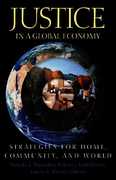Question
I need some help please a / If the economics is in the transition segment of the AS curve, the increase of money supply will
I need some help please
a / If the economics is in the transition segment of the AS curve, the increase of money supply will lead to ...
a. the increase of the overall price level while the production level is not changed
b. the increase of the real GDP while the price level fixity
c. the increase of the nominal GDP in a greater degree than the increase of the teal GDP
d. the increase of the real GDP in a greater degree than the increase of the nominal GDP
2 / What of the following effects do NOT explain the negative slope of the AD curve?
a. foreign purchase effect
b. crowding - out effect
c. interest-rate effect
d. real wealth effect
3 / Provided consumption function in a closed economy without a public sector is C = 200 + 0.75*Y and yield equals to 4000, what does the average propensity to saving equal to?
a. 0.2
b. 0.25
c. 0.75
d. 0.8
4/ In a country aggregate demand is: Y = 2800 - 400*P. Potential productive rate is 2250. In the short-term period the price level is 1,2. In the long-term period can be expected ...
a. overall price level decreases
b. overall price level increases
c. real output decreases
d. real output increases
6 / Which of the following is not taken into account when calculating GDP based on expenditure?
a. Scholarships, pensions, and allowances paid from the state budget.
b. Value of fixed capital consumed.
c. Trade balance with other countries.
d. Household expenses for the purchase of durable goods.
e. Government purchases of goods and services.
7/ If gross investment equals to $240 bill., budgetary surplus is $15 bill., export volume is $75 bill., import volume is $100 bill., then private savings equal to...
a. $280 bill.
b. $230 bill.
c. $200 bill.
d. $250 bill.
8 /Which of the following is NOT regarded as withdrawals from National Income?
a. individual income tax paid by a government employed Mr. Smith
b. large family state benefits
c. transferring some of one's pension into a private bank account
d. "Gazprom"'s purchasing pipes in Germany
9 / If a closed economy without a public sector has the marginal propensity to saving equalling to 1/3, thus investment multiplier is...
a. 2
b. 1.5
c. 3
d. 2/3
11 / If the economics is on the 'Keynesian' segment of AS curve, the increase of public expenses is explained by
a. the increase of the output mix and the price level
b. the increase of the output mix, the price level does not change
c. the increase of the price level, output mix does not change
d. none of the listed
e. all above listed variants are possible
12 / The annual rate of real GDP growth equals 4.7%. Hence, doubling GDP will take... years.
(Write an integer without a dot at the end. For example: 7)
13 / The economy is in recession, the marginal propensity to consume is 0.75. To achieve the national income increase in the short-run period by 120 monetary units, how much should the autonomous taxes cut by?
a. 30 units
b. 80 units
c. 90 units
d. 40 units
14 / Aggregate supple (AS) - is...
a. the amount of branch offers in economics
b. the dependence of real GDP on the real demand
c. offer of domestic goods and services less the net export
d. total amount of goods and services that companies and the state can offer at the different price level in the country
Step by Step Solution
There are 3 Steps involved in it
Step: 1

Get Instant Access to Expert-Tailored Solutions
See step-by-step solutions with expert insights and AI powered tools for academic success
Step: 2

Step: 3

Ace Your Homework with AI
Get the answers you need in no time with our AI-driven, step-by-step assistance
Get Started


